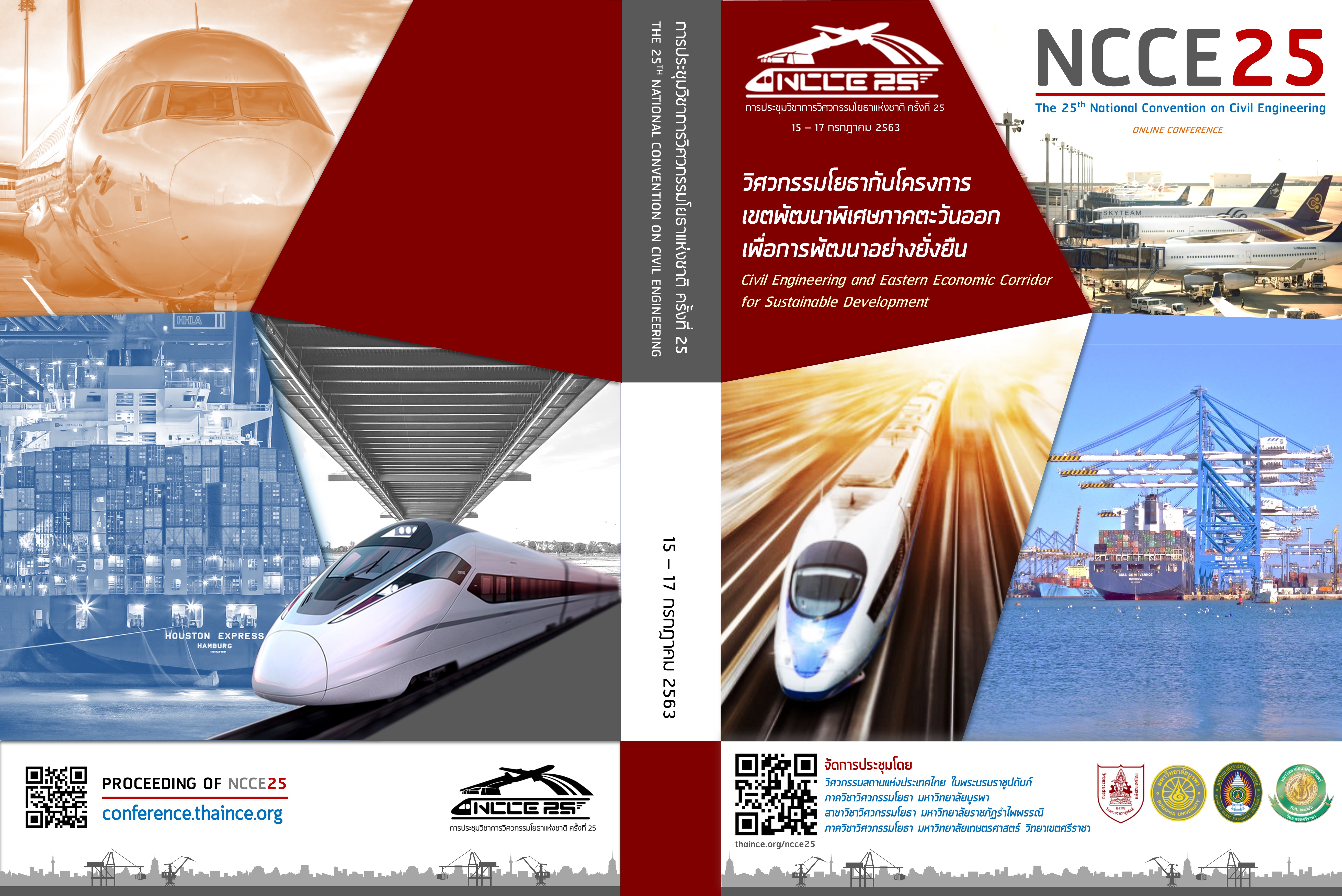Roughness Coefficient of Open Channel Carrying Garbage and Water Hyacinth
Keywords:
laboratory experiment, open channel, canal, Manning’s n roughness coefficient, garbage, water hyacinthAbstract
This experimental study was aimed at determining the Manning's roughness coefficient of canals carrying floating garbage and water hyacinth. The study was conducted in a flow circulated rectangular flume of 0.6×16×0.75 m in Coastal Hydraulic Laboratory, Department of Water Resources Engineering, Chulalongkorn University. Floating garbage was modeled using weighed plastic and wood in this experiment with seventy-five sets. In addition, water hyacinth was modeled in this experiment with fifty sets. The experiments were performed with the ranges of flow depths of 0.45 m to 0.60 m and 7.87 liter/s to 17.4 liter/s, respectively. The study results indicated that the garbage and water hyacinth increased the Manning’s n roughness coefficient about 20% and 17%, respectively. The results also shown that the increase of length of both garbage and water hyacinth increased the Manning’s n roughness coefficient. Moreover, the increase of submerge depth of both garbage and water hyacinth increased the Manning’s n roughness coefficient.
Downloads
Downloads
Published
How to Cite
Issue
Section
License
บทความทั้งหมดที่ได้รับการคัดเลือกให้นำเสนอผลงานในการประชุมวิชาการวิศวกรรมโยธาแห่งชาติ ครั้งที่ 25 นี้ เป็นลิขสิทธิ์ของ วิศวกรรมสถานแห่งประเทศไทย ในพระบรมราชูปถัมภ์



